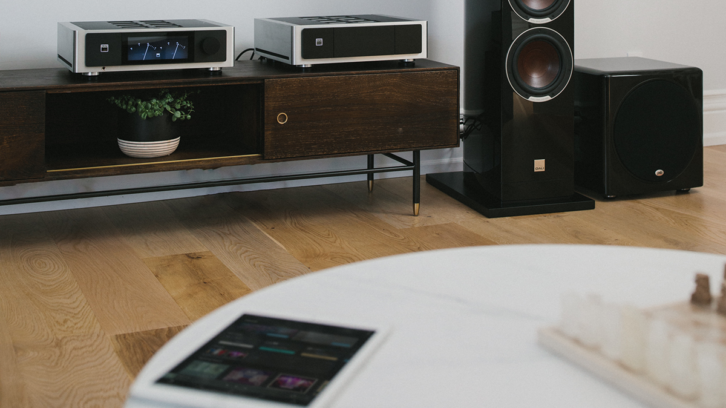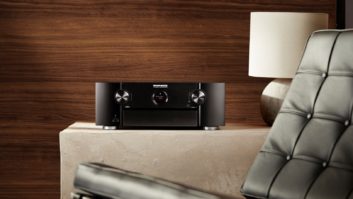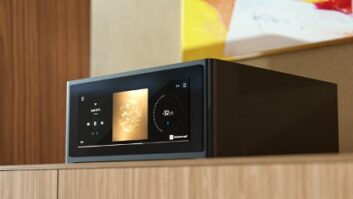With the soaring popularity of both whole-home audio and streaming music, custom installers are looking for a multi-room audio ecosystem that can handle a wide variety of streaming services, integrate into their control system of choice, and, most important, is stable and reliable. More and more integrators are discovering that BluOS from Lenbrook checks all those boxes — and then some.

Now more than 10 years old, BluOS is a well-evolved platform whose algorithms are constantly being refined for multi-zone synchronization to keep it running smoothly — everything will play at high quality and in perfect time alignment, even if you’re streaming hi-res audio content to multiple zones. That technology allows BluOS to power networks of all sizes, supporting up to 60 zones on a single network.

“BluOS devices use powerful processing, with all recent products using quad-core processors and fast DDR4 memory to make interfacing with them quick and responsive,” says Andrew Haines, BluOS Platform Manager at Lenbrook. “We use gigabit ethernet ports and many discovery protocols such as Multicast, Broadcast and Unicast and we even wrote and shared our own called LSDP. This means that discovering devices is reliable and quick, and that the traffic to and from the BluOS players can be well managed on the network without causing issues.”
In terms of audio quality, it will not disappoint — no matter how large the system. “Streaming hi-res audio, whether wired or wireless, to one player or several is challenging, and requires some very clever algorithms to make it work seamlessly as BluOS does, and we’ve gotten pretty good at it,” continues Haines. “Some platforms claim to be hi-res, but it can be conditional — its only hi-res when listening to a single player and compressed when grouped, or its only hi-res when the product is using a wired connection and compressed on Wi-Fi. In other cases, the number of hi-res devices on a network might be limited to a smaller amount. Not us — BluOS and its team of software engineers have leveraged smart processes and advanced router technologies to guarantee that the increasing volumes of audio data are transferred seamlessly without loss or comprising sound quality.”
Plays Well With Others
In addition to offering robust service, BluOS is designed to integrate with a large number of control systems, with many of the integrations custom developed by Lenbrook in partnership with control partners. “We developed our integrations for Control4, Nice, RTI, and Lutron in-house, working in conjunction with those brands,” says Haines. “We also work very closely with partners such as Ultamation for integration with Crestron and with URC they help us by building and supporting it themselves. We are growing the number of KNX partners for our European integrators and are always open to sharing our API — which is public — with other control brands and devices such as Rithum, Rako Lighting, and AVA to make sure that integrators have a choice in the way they integrate BluOS into their systems.”
According to Haines, Lenbrook is constantly evolving its drivers to make the process simpler and the integration more feature-rich. “We talk to the market and respond wherever we can to requests and feedback from integrators,” he says. “One great aspect of using BluOS is that, whether you are using a Bluesound speaker, an NAD Masters streamer, or Roksan integrated amplifier or the PSB Alpha iQ all-in-one speakers, it’s the same driver and integration as all BluOS Enabled devices. No other multi-room audio ecosystem has the same number of options as BluOS.”
Further, the company is committed to supporting all legacy products, right back to the NAD M50, which was the first-ever BluOS Enabled device.
Working With BluOS

As most integrators know, installing software updates in any integrated system is a major cause of stress; however, if BluOS is working as a standalone audio system, then Haines says it is a pretty seamless experience. “Running updates can be a risk in any integrated system,” he explains, “but we have a commitment to test all upgrades in our QA Lab and across our beta testing network before launch. We also ensure that any API we use in control integrations will not change.”
Additionally, Lenbrook puts the power to update in the integrators’ hands — tools are available so BluOS can update itself or be updated only when required by an integrator.
And if a problem should arise, Lenbrook has your back. “We have a strong global distributor network that offers first-line support,” concludes Haines. “We also have our own support team based in Ontario, Canada. We are very responsive to dealer requests as we understand the pressures and challenges of being on-site and the cost of rolling trucks to visit a client and troubleshoot a problem. This is an aspect of CI that we are always focused on, and we are always looking at ways we can improve it further.”
Want to learn more about BluOS? Visit https://bluos.io/.







